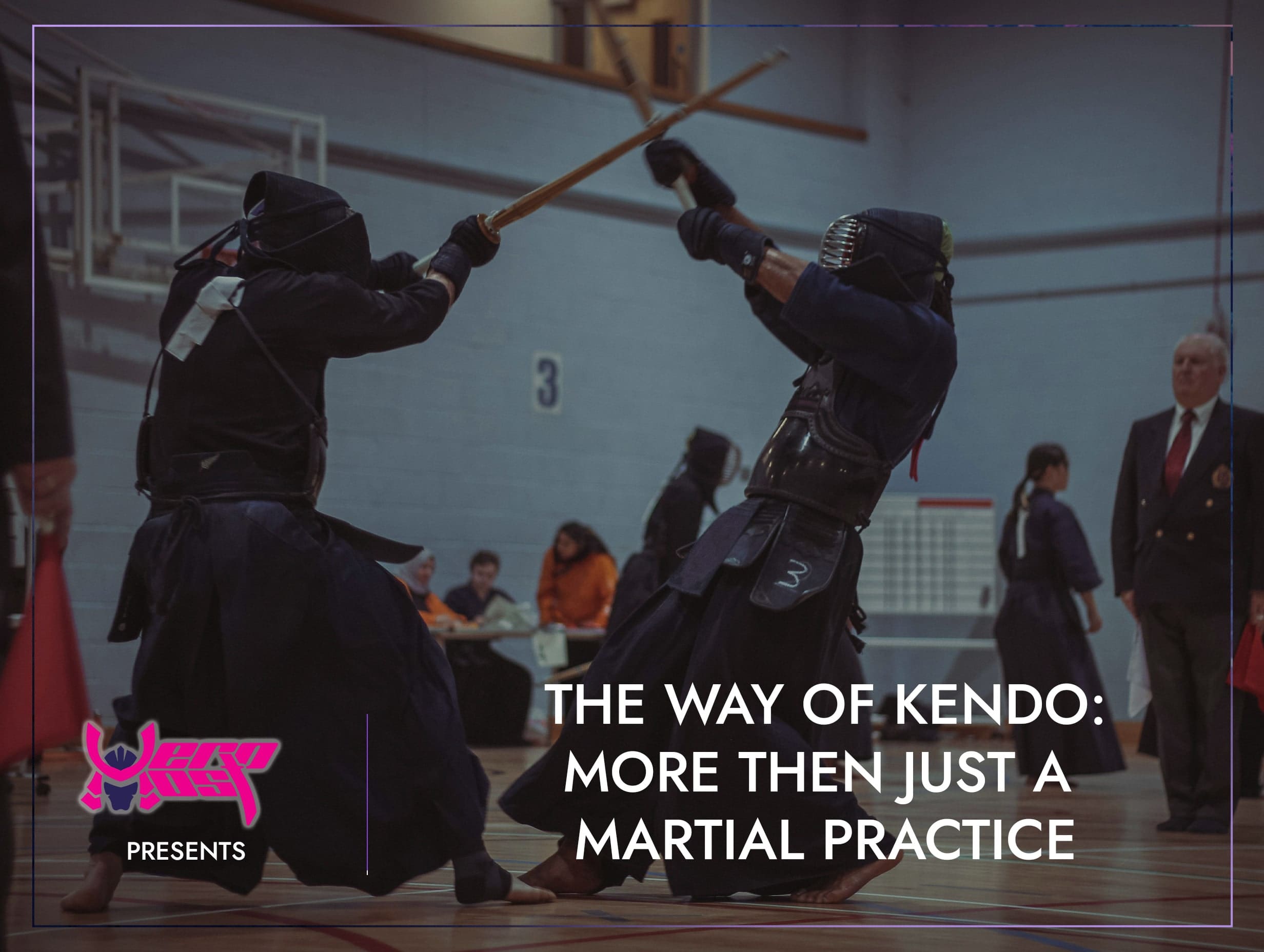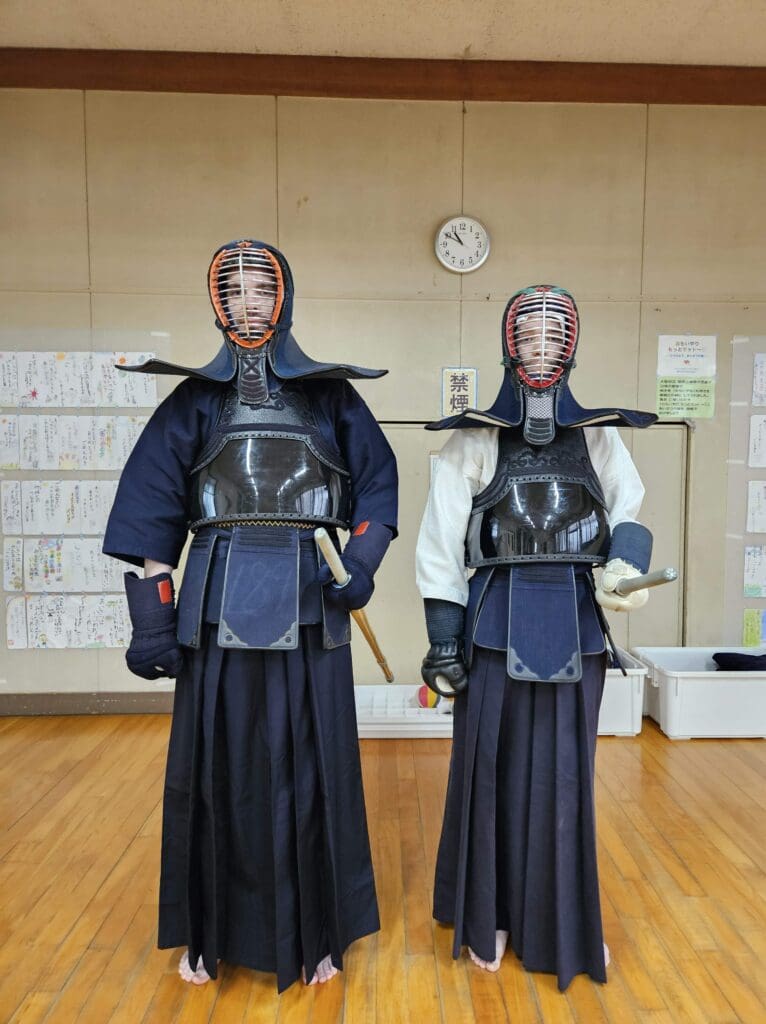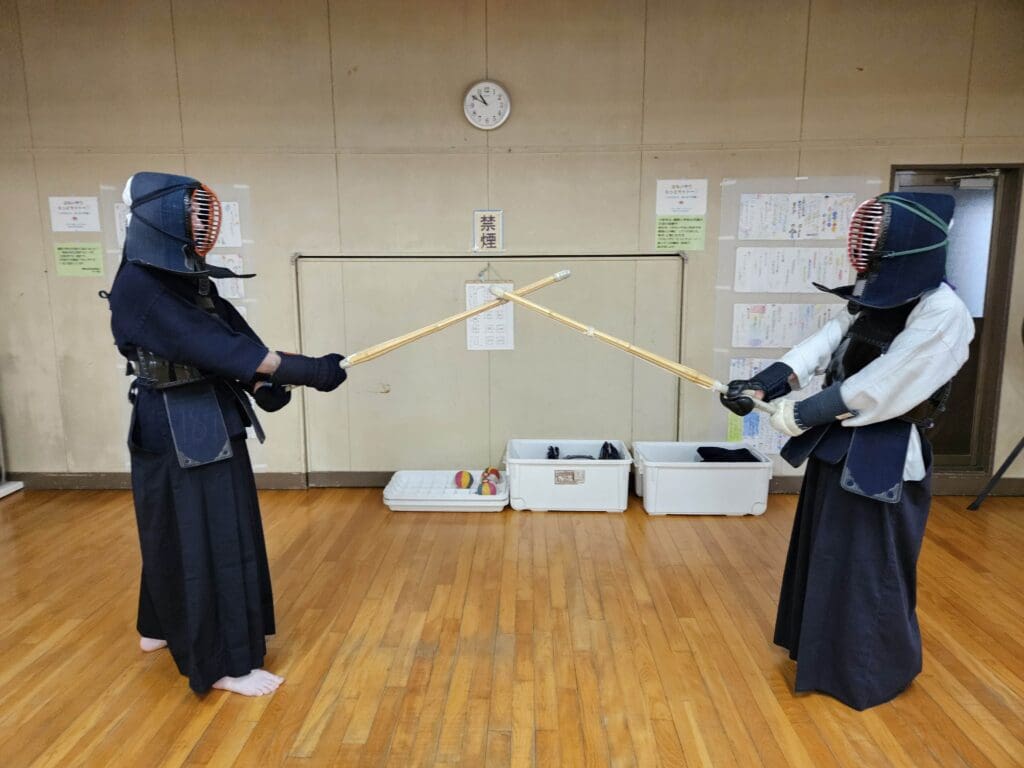The Way of Kendo: More Than Just A Martial Practice
- Home
- Martial Arts Journey
- The Way of Kendo: More Than Just A Martial Practice

- Mikey Ryu
- June 17, 2024
- 0
The Way of Kendo: More Than Just A Martial Practice
During our time in Japan, we immersed ourselves in the practice of kendo, allowing us to step into the world of the samurai. These noble, disciplined, and spiritually attuned warriors of Japan provided us with a unique perspective on martial arts. Our journey went beyond merely learning the techniques of swordsmanship; it was a profound exploration into a way of life deeply rooted in Japanese culture and philosophy.

Engaging in kendo, we discovered that it is much more than mastering the art of the sword. It is an embodiment of a lifestyle that emphasises discipline, respect, and continuous self-improvement. Through our training, we experienced firsthand how kendo integrates physical prowess with mental and spiritual development. Each practice session, with its rituals of bowing, meditation, and precise movements, reinforced the importance of mindfulness and respect for tradition.
The samurai ethos, characterised by a balance between martial skill and calm spirituality, permeated our kendo experience. We learned that true strength lies not just in physical capability but in the serenity and focus that comes from a disciplined mind. The practice of kendo taught us to approach challenges with a calm and collected demeanour, mirroring the samurai’s ability to remain composed under pressure.
Our kendo journey in Japan was a transformative experience. It offered us a deeper understanding of how martial arts serve as a path to personal growth and enlightenment. We came to appreciate kendo as a way of life, one that cultivates not only physical agility but also mental clarity and spiritual depth. Through this immersion, we gained invaluable insights into the harmonious balance of body, mind, and spirit that defines the true essence of kendo.
What Is Kendo?
Kendo, often referred to as “the way of the sword,” is a traditional Japanese martial art that emphasises discipline, respect, and the skilful use of the sword. Its origins trace back to the Edo period (1603-1868), a time of relative peace in Japan under the rule of the Tokugawa shogunate. During this era, the samurai, the warrior class of Japan, sought ways to maintain their martial prowess and pass down their combat skills in the absence of warfare.
Kendo was developed as a means to preserve the techniques and spirit of the samurai. Training in kendo allowed the samurai to stay sharp and ready for any potential conflict, even during the prolonged peace of the Edo period. The practice involved rigorous training with wooden swords (bokken) and, later, bamboo swords (shinai), along with protective armour (bogu) to facilitate safe and realistic sparring.
The transition from kenjutsu, the traditional art of swordsmanship practised by the samurai, to modern kendo began in the late 19th century. With the Meiji Restoration in 1868, Japan underwent significant social and political changes, including the modernisation of its military forces. As a result, many traditional martial arts faced decline. However, dedicated martial artists and organisations, such as the Dai Nippon Butoku Kai (Great Japan Martial Virtue Society) founded in 1895, sought to preserve and modernise these ancient practices.
What Did We Practice?

During our kendo sessions, we focused on mastering fundamental techniques and adhering to the rigorous etiquette that defines this martial art. Here is an overview of the key elements we practised:
The Basic Kamae (Stance) of Kendo
Kamae is the foundational stance in kendo, crucial for both offence and defence. We practised the chudan-no-kamae, the most common stance, where the shinai (bamboo sword) is held in front of the body with the tip pointing towards the opponent’s throat. This stance ensures readiness and balance, allowing quick movements and effective strikes.
The Men (Head) Strike
The men strike targets the opponent’s head. We practised delivering this strike with precision and power, ensuring that the shinai connects with the top of the head guard (men). This technique emphasises proper footwork, timing, and follow-through to execute a clean, effective strike.
The Dou (Body) Strike
The dou strike aims at the opponent’s torso, specifically the sides protected by the dou (armour). We focused on executing this strike by stepping to the side and delivering a horizontal cut to the body. This technique requires accuracy and control to strike the target area effectively.
The Kote (Wrist) Strike
The kote strike targets the wrists, specifically the handguards (kote) worn by the opponent. We practised this quick and precise strike, which is often used to neutralise an opponent’s attack by targeting their weapon-wielding hand. Mastery of this technique involves sharp reflexes and precise aim.
Kendo Etiquette
Etiquette is a vital aspect of kendo, reflecting the discipline and respect inherent in the art. Our practice sessions included several key elements of kendo etiquette:
Meditation:
We began each session with a brief period of meditation (mokuso) to clear our minds and focus on the practice ahead.
Stretches:
Proper warm-up exercises and stretches were essential to prepare our bodies for rigorous physical activity and prevent injuries.
Bowing:
Bowing (rei) is a fundamental expression of respect in kendo. We bowed to our practice partners, instructors, and the dojo (training hall) at the beginning and end of each session.
Seiza (Proper Way of Sitting):
We practised seiza, the formal kneeling position, during moments of instruction and meditation. This posture embodies humility and readiness, central to the spirit of kendo.
These practices not only honed our technical skills but also instilled a deep sense of discipline, respect, and mindfulness, embodying the true essence of kendo.
Why It’s More Than a Martial Practice:
When people hear the term “martial art,” they often envision it as merely a method of combat or self-defence. However, for me, martial arts represent much more than just fighting techniques. Take Kendo, for instance. Kendo is not just about learning to wield a sword; it embodies a comprehensive way of life. The “do” in kendo translates to “the way,” signifying that kendo is both a physical and mental discipline.
Practising kendo involves honing your skills through rigorous training, but it also requires developing mental fortitude and opening your mind to the broader lessons it offers. It’s about preparing oneself not only for the physical challenges of a match but also for the various battles life presents.
Martial arts like kendo teach us to view life and its challenges from a different perspective. The discipline, respect, and perseverance learned through kendo practice extend far beyond the dojo. They influence how we approach daily tasks, interact with others, and overcome obstacles. Kendo instils a sense of resilience, patience, and clarity, allowing practitioners to navigate life’s complexities with a calm and focused mind.
In essence, kendo and other martial arts provide a unique lens through which to view the world. They teach us that true mastery lies not just in physical prowess but in cultivating a balanced and enlightened spirit. This holistic approach to training shapes our character, strengthens our resolve, and broadens our understanding of ourselves and the world around us. Through martial arts, we learn to face life’s challenges with grace and determination, transforming each obstacle into an opportunity for growth and self-improvement.
Search
Categorys
- Branding (12)
- Business Growth Guides (3)
- Business Insights (3)
- Content Marketing (43)
- Domain Authority (19)
- Email Marketing (28)
- Google Analytics & Search Console (5)
- Hack or Not (2)
- Hero Host News (0)
- Inbound Marketing (32)
- Lessons From Asia (40)
- Marketing Guides (11)
- Martial Arts Journey (14)
- Outbound Marketing (8)
- Search Engine Optimisation (SEO) (41)
- Social Media Marketing (38)
- Web Design (20)
- Website Hosting (4)
- Wordpress (2)






